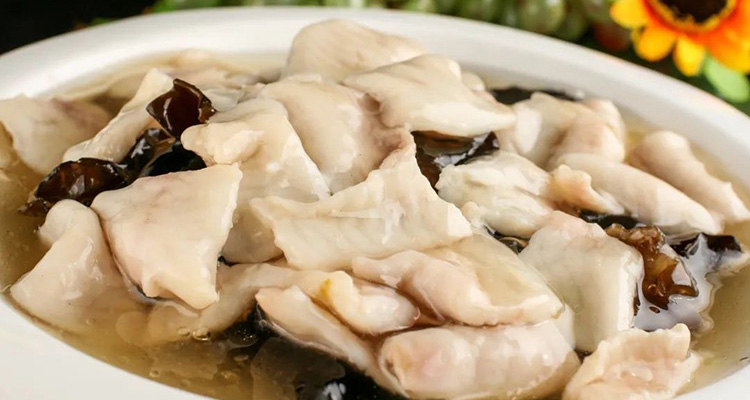Zao-Liu Fish Fillet: Classic Shandong Delicacy
When wandering Beijing’s hutongs or the lanes of Jinan, history and architecture will catch your eye — but don’t miss the local culinary treasures tucked into ordinary neighborhood restaurants. In China’s vast food map, Shandong (Lu) cuisine stands out for its long history, refined techniques, and elegant flavors. Zao-liu Fish Fillet is one of its quiet masterpieces: not loud with spice or heavy sauces, but memorable for its jade-white fish, silky texture, and a subtle, lingering fermented-rice aroma known as “zao”. Read on to discover the dish’s origins, flavor profile, cooking technique, tasting tips, and a simple home version so you can recreate the experience after your trip.
Origins: From Imperial Tables to Everyday Menus
Zao-liu Fish Fillet developed alongside the evolution of Shandong cuisine, which was once a staple of imperial banquets. Shandong chefs prized precise knife work, careful heat control, and balanced seasoning. “Zao”—a fermented rice or grain byproduct—has been used in Chinese cooking for centuries as both a preservative and flavoring. Combining zao with the distinctive quick-toss “liu” technique (a Lu-method of coating and glazing) to finish delicate fish created an elegant dish prized by officials and later embraced by ordinary households. Today it remains a benchmark for authentic Lu cuisine in many restaurants across northern China.
Cultural Meaning: Precision and Restraint
Tasting zao-liu fish is more than flavor — it’s a lesson in the Shandong culinary ethos of “refinement and restraint.” Confucius once praised finely prepared food, and this dish exemplifies that ideal.
- Ingredient quality: Fresh mandarin fish (perch) or firm-bodied greenback (blue fish) are preferred for their natural sweetness.
- Knife skill: Uniform, thin slices are vital for even cooking and a smooth mouthfeel.
- Heat control: The “slip-fry” (low-temperature oil treatment) requires exact oil temperature — too hot makes the fish tough, too cool and the coating won’t set.
- Zao aroma: The fermented rice aroma is subtle, layered, and mellow — it complements rather than overwhelms the salty-sweet base, expressing a balanced, refined taste.

Flavor and Texture: A Gentle, Layered Encounter
A serving of zao-liu fish looks understated: translucent white fish slices bathed in a light amber, glossy sauce. Often garnished with a few green vegetables or thin ham strips, the presentation is harmonious and inviting.
Lift a slice with chopsticks and you’ll notice its delicate tremble. The first impression is that soft, nuanced zao fragrance — not boozy, but gently fermented, with hints of rice and mellow sweetness. When the fish touches your tongue it melts with minimal chewing; the silky texture is the show’s highlight. The underlying savory base supports the zao aroma, creating a rounded, layered palate: clean, rich, and never greasy. It’s a signature example of Shandong’s balanced approach to taste.
How It’s Made: Skill Behind Simplicity
A traditional zao-liu fish requires artisanal technique. Key steps include:
- Choosing and slicing: Start with about 1–1.5 kg of fresh mandarin fish. Fillet and cut evenly thin slices across the grain — thin yet intact.
- Marinating and coating: Toss fish slices with salt, cooking wine, egg white, and a little wet starch. This “marinade-and-coat” locks moisture and forms a protective film for cooking.
- Slip-frying (shua you): Heat oil to a low–medium temperature (about 100–120°C). Slide the coated slices in one by one, spreading them gently until they turn white and just curl. Remove and drain — this step cooks them gently without over-frying.
- Zao-liu sauce: Sauté aromatics, add the key zao sauce (fermented rice lees diluted and seasoned), a splash of stock, and adjust salt and a pinch of sugar. Thicken with a glossy starch slurry to form a clear, glassy glaze.
- Finish: Quickly toss the slip-fried fish into the hot zao glaze so every slice is evenly coated, then plate immediately.

How to Enjoy and Local Tips
- Eat immediately: The dish is best right off the stove when texture and aroma are at their peak.
- Pairing: A bowl of steamed white rice complements the savory-sour-sweet balance and highlights the fish’s natural sweetness. Light vegetable sides or a clear soup are ideal accompaniments.
- Ordering tip: Look for a bright, clear glaze and intact fish slices. If the fish is dry, flaky, or smells overly fishy, the kitchen may have used low-quality produce or rushed the technique.
- Where to try it: In Beijing, search for reputable Lu-cuisine restaurants or old establishments; in Shandong cities like Jinan, you’ll find many authentic versions prepared by chefs rooted in local traditions. This dish is perfect for diners who prefer delicate, non-spicy flavors.
Try a Simple Home Version
If you want to recreate zao-liu fish at home, here is an approachable shortcut:
- Ingredients: Use firm white fish fillets (sole or sea bass), egg white, starch, scallion, ginger, and a bottled “zao” sauce or fermented rice seasoning available at Asian supermarkets.
- Quick method: Pat fish dry, coat with salt, cooking wine, egg white, and starch. Poach or gently simmer slices until they turn opaque. Separately simmer the bottled zao sauce with a little stock, thicken, then fold the fish briefly into the sauce and serve.
- Notes: Zao sauces vary in saltiness — taste first and season carefully. Don’t overcook the fish; brief contact with heat preserves silkiness.

Conclusion
Zao-liu Fish Fillet is a graceful example of Shandong cuisine’s artistry: simple in appearance, exacting in technique, and rich in subtle taste. Whether you’re planning a culinary itinerary in China or trying a home adaptation, this dish offers a memorable experience of umami restraint and fermented-rice aroma. Next time you visit China, seek out a genuine Lu restaurant and let the silky fish and gentle zao fragrance become one of your lasting travel memories.


